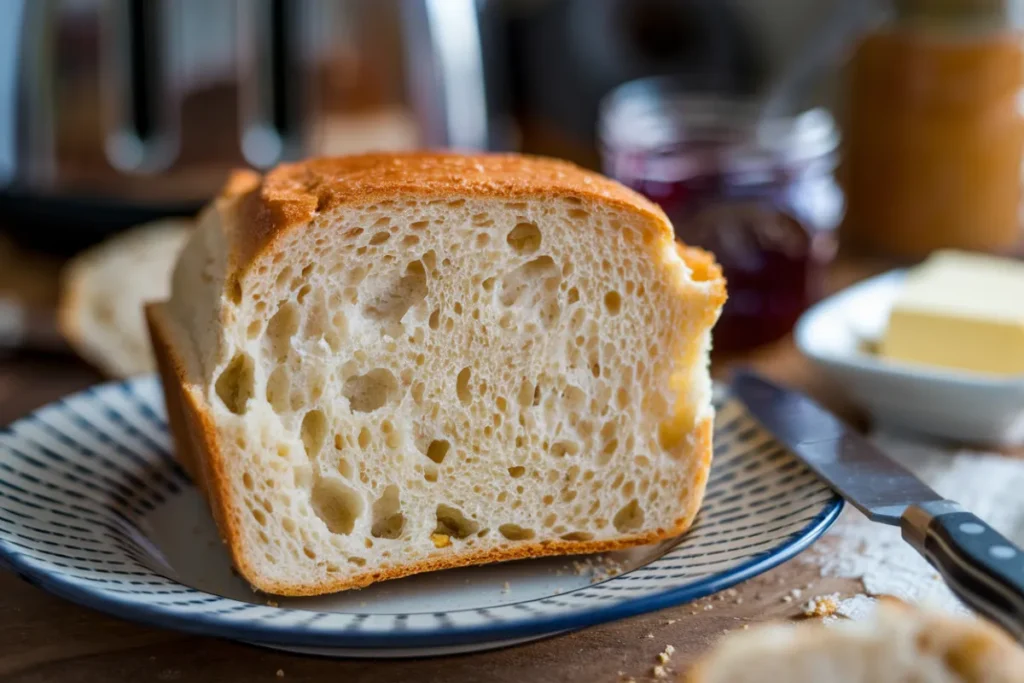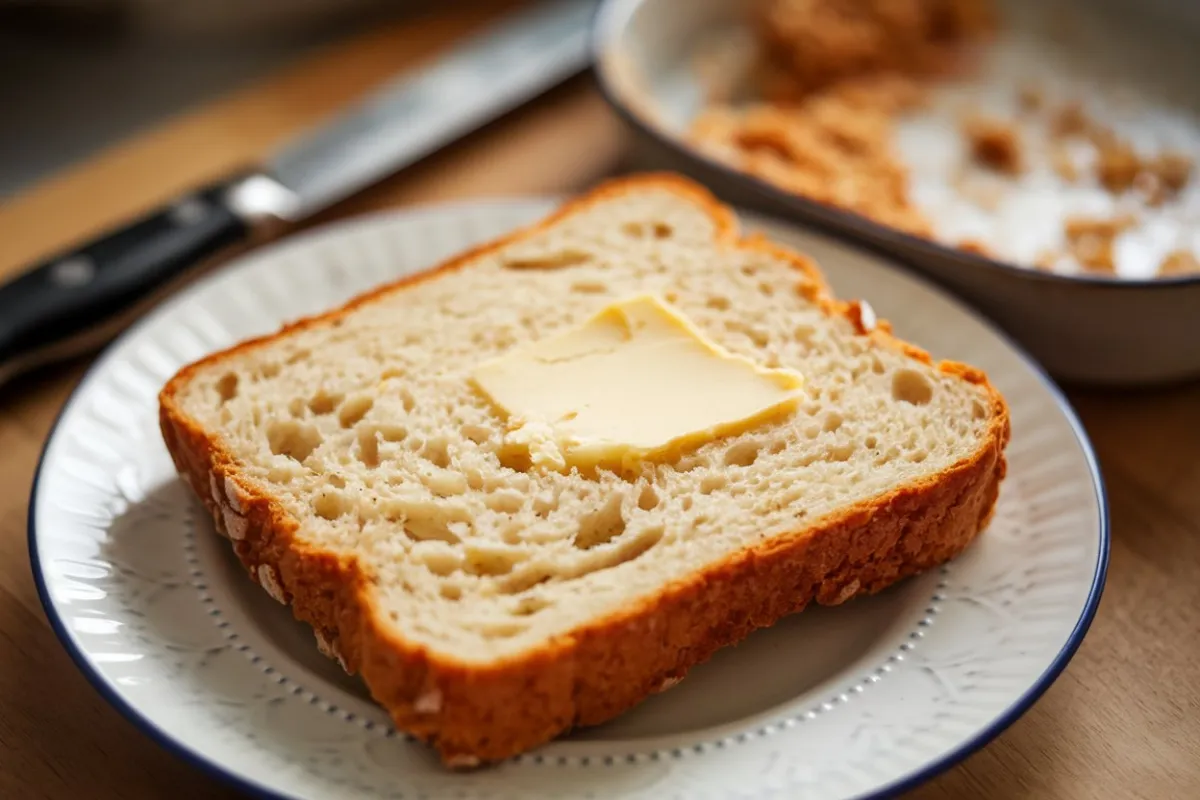When it comes to crafting the perfect sandwich, the bread you choose can make all the difference. Whether you’re aiming for a light, crispy bite or a hearty, chewy experience, the type of bread sets the foundation for the flavors, textures, and overall satisfaction of your meal. In this comprehensive guide, we’ll explore the best types of bread for sandwiches, consider important factors like taste and texture, and dive into health benefits and pairing suggestions.
Factors to Consider When Choosing Bread for Sandwiches
Not all breads are created equal, especially when it comes to making sandwiches. To choose the right bread, it is important to consider several factors:
- Texture and Density: Different sandwiches require different textures. For example, a dense, chewy bread like sourdough or ciabatta is perfect for strong fillings, while a lighter, softer bread such as white bread or brioche works well with simpler ingredients.
- Flavor Profiles: The flavor of the bread should complement the fillings. For instance, the tangy notes of sourdough match strong cheeses and cured meats, while the slight sweetness of brioche balances savory fillings.
- Health Considerations: Whole grain and multigrain options often provide more fiber, vitamins, and minerals compared to refined breads. Gluten-free breads cater to specific dietary needs.
- Ease of Handling and Slicing: Some breads, such as baguettes or ciabatta, can be hard to slice thinly or evenly, which may be a concern if presentation or portion control is important.
- Freshness and Storage: Certain breads, like focaccia or baguettes, do not last long and may become stale quickly. On the other hand, sliced white bread or whole wheat bread tends to stay soft and fresh longer.
For a more detailed overview of the different types of bread ideal for various sandwiches, check out Sandwich Bread 101, which covers everything from rustic loaves to more refined options.
Best Breads for Sandwiches by Type
Let’s now break down the most popular types of bread and their best uses for different kinds of sandwiches.
1. White Bread
White bread is a staple in many households, known for its soft, airy texture and mild flavor. It is a versatile option that serves as a neutral backdrop for various sandwich fillings.
- Characteristics: Soft, slightly sweet, and light. It is easy to slice and often used for everyday sandwiches.
- Best Uses:
- Classic Sandwiches: Ideal for PB&J, ham and cheese, and simple turkey sandwiches.
- Toast: Excellent for creating crispy toasted sandwiches or enjoying with a spread of butter and jam.
- Kids’ Lunches: Its mild taste and soft texture make it a favorite for children.
2. Whole Wheat Bread
Whole wheat bread is known for its health benefits, offering a denser texture and a slightly nutty flavor because it includes the whole grain.
- Characteristics: Dense and hearty with a mild, nutty taste. Rich in fiber and nutrients.
- Best Uses:
- Healthy Sandwiches: Perfect for veggie sandwiches, lean meats, and lighter spreads.
- Turkey and Avocado: Complements fresh ingredients like turkey, avocado, lettuce, and tomato.
- Toasted Sandwiches: Adds a healthy twist to toasted cheese or tuna melts.
3. Sourdough Bread
Sourdough bread has become very popular in recent years due to its unique tangy flavor, chewy texture, and crispy crust. Made through a fermentation process, it offers a complex taste profile.
- Characteristics: Tangy, chewy, with a crisp crust. Made with natural yeast and a longer fermentation process.
- Best Uses:
- Grilled Cheese: The tartness of sourdough pairs well with rich cheeses like cheddar, gouda, or Gruyère.
- Paninis: Holds up well to grilling or pressing, making it perfect for panini sandwiches with cured meats and cheeses.
- Gourmet Sandwiches: Adds depth to upscale sandwich creations featuring smoked salmon, arugula, and capers.
To learn more about using sourdough in a variety of sandwiches, check out The Best Breads for Every Type of Sandwich.
4. Rye Bread
Rye bread is known for its unique flavor, often described as slightly bitter or earthy. It comes in different forms, from light to dark, depending on the type of flour used.
- Characteristics: Dense and chewy with a slightly sour, earthy flavor. High in fiber and usually darker in color.
- Best Uses:
- Reubens: An ideal match for corned beef, Swiss cheese, sauerkraut, and Russian dressing.
- Pastrami Sandwiches: The strong flavor complements savory meats like pastrami or roast beef.
- Smoked Fish: Pairs well with smoked salmon or mackerel, cream cheese, and dill.
5. Ciabatta Bread

Ciabatta, a traditional Italian bread, is known for its porous texture and crunchy crust. The word “ciabatta” means slipper in Italian, reflecting its flat, elongated shape.
- Characteristics: Light, airy interior with a crunchy, chewy crust. Absorbs sauces and spreads well.
- Best Uses:
- Italian Sandwiches: Ideal for fresh mozzarella, tomato, basil, and balsamic sandwiches.
- Caprese: Perfect for light, flavorful sandwiches that benefit from a crunchy exterior.
- Panini: Suitable for pressing, grilling, and serving warm with melted cheese and meats.
6. Focaccia Bread
Focaccia is a flat, oven-baked bread with a rich flavor often infused with olive oil, herbs, and toppings like onions, tomatoes, or olives.
- Characteristics: Soft, airy interior with a crispy, oily crust. Often seasoned with rosemary, garlic, and sea salt.
- Best Uses:
- Open-Faced Sandwiches: Provides a sturdy base for open-faced sandwiches topped with vegetables, meats, or cheese.
- Mediterranean Flavors: Complements ingredients like feta, olives, sun-dried tomatoes, and roasted peppers.
- Picnic Sandwiches: Holds up well to transportation and tastes great even when served cold.
7. Baguette
A classic French bread, the baguette is characterized by its long, narrow shape, crispy crust, and soft interior. It’s known for its versatility and is a staple in many European cuisines.
- Characteristics: Crispy, golden-brown crust with a soft, airy interior. Traditionally baked in a long, thin shape.
- Best Uses:
- French Sandwiches: Perfect for classic French sandwiches like jambon-beurre (ham and butter) or croque monsieur.
- Bánh Mì: The crusty exterior and soft interior make it an ideal choice for Vietnamese bánh mì sandwiches.
- Submarine Sandwiches: Sturdy enough to hold a variety of fillings, from meats and cheeses to vegetables and sauces.
8. Multigrain Bread
Multigrain bread is made from a combination of different grains, such as oats, barley, flax, and millet, providing a wide range of flavors and textures.
- Characteristics: Hearty, dense, and packed with nutrients. Often has a slightly sweet, nutty flavor.
- Best Uses:
- Veggie Sandwiches: Ideal for vegetarian sandwiches that feature hummus, avocado, or sprouts.
- Healthy Options: Great for those looking to add more fiber and nutrients to their diet.
- Nut Butter Sandwiches: Pairs well with almond or peanut butter and fruit spreads for a nutritious snack.
9. Brioche Bread
Brioche is a rich, buttery bread with a slightly sweet flavor. It’s soft, fluffy, and has a light, golden crust, often enriched with eggs and butter.
- Characteristics: Soft and fluffy with a tender crumb. Slightly sweet and buttery.
- Best Uses:
- Breakfast Sandwiches: The sweetness complements ingredients like eggs, bacon, and cheese.
- Gourmet Burgers: Adds a touch of richness and sweetness that balances savory meats and condiments.
- French Toast Sandwiches: Excellent for creating sweet sandwiches with cream cheese, fruit, or chocolate spreads.
10. Gluten-Free Bread
Gluten-free bread is made from alternative flours such as rice, almond, or coconut flour. It caters to those with gluten sensitivities or celiac disease.
- Characteristics: Varied textures and flavors depending on the ingredients used. Often denser and more crumbly than traditional bread.
- Best Uses:
- Celiac-Friendly Sandwiches: Suitable for all types of sandwiches where gluten is a concern.
- Health-Conscious Choices: Often lower in carbohydrates and higher in protein, appealing to those on specific diets.
- Creative Sandwiches: Pairs well with unique fillings like avocado, smoked salmon, or nut butter.
Pairing Bread with Sandwich Fillings
To make the most of your sandwich, it’s important to match the right bread with the right fillings:
- Meat-Based Sandwiches:
- Chicken and Turkey: Pair with whole wheat bread or a baguette for a chewy texture that holds up to moisture.
- Ham and Roast Beef: Use rye bread or ciabatta to add depth of flavor and absorb the juices without becoming soggy.
- Vegetarian and Vegan Sandwiches:
- Veggie and Falafel: Multigrain bread or focaccia works well with a range of veggies, hummus, and sauces.
- Hummus Sandwiches: Pair with ciabatta or sourdough for a balanced texture.
- Cheese Sandwiches:
- Grilled Cheese: Use sourdough or white bread to achieve the perfect crisp exterior.
- Cheese and Tomato: Match with a lighter bread like whole wheat or multigrain to let the ingredients shine.
- Breakfast Sandwiches:
- Egg-Based Sandwiches: Brioche or baguette add a soft, airy texture that complements eggs and bacon.
- Avocado Toast: Pair with whole wheat or sourdough for added crunch and flavor.
Health Considerations of Different Breads
When choosing bread for sandwiches, health considerations are crucial. Here are some key aspects:
- Whole Grains and Fiber: Choose breads like whole wheat, multigrain, or sourdough that provide higher fiber content, which is beneficial for digestion and overall health.
- Low Glycemic Index: Whole grain breads often have a lower glycemic index, which can help regulate blood sugar levels.
- Gluten-Free and Low-Carb Alternatives: For those with specific dietary needs, consider gluten-free breads made from alternative flours. They are lower in carbohydrates and higher in proteins.
- Additives and Preservatives: Some commercial breads contain additives and preservatives that may not be desirable. Opt for freshly baked or homemade breads when possible.
FAQs on Choosing Bread for Sandwiches
- What is the healthiest bread for sandwiches?
The healthiest bread options are usually whole wheat, multigrain, or gluten-free breads that provide essential nutrients like fiber and protein. - What bread is best for grilled cheese sandwiches?
For grilled cheese, sourdough or white bread is ideal due to their ability to crisp up nicely while retaining a soft interior. - Is sourdough better than white bread for sandwiches?
Sourdough is often considered better than white bread due to its unique flavor, texture, and higher nutritional value from the fermentation process. - Which bread is best for cold sandwiches?
Ciabatta or multigrain bread are great choices for cold sandwiches as they offer structure and flavor without becoming soggy. - Can I use gluten-free bread for all types of sandwiches?
Yes, gluten-free bread can be used for most sandwich types, but it’s important to choose a brand that fits your specific taste and texture preferences.
Conclusion
Choosing the best bread for sandwiches depends on personal preferences, dietary needs, and the types of ingredients used. Whether you prefer the classic taste of white bread, the nutritional benefits of whole wheat, or the unique flavors of sourdough and rye, there’s a perfect bread for every sandwich.
For more ideas and inspiration, explore the 13 Best Breads for Sandwiches to find the ideal bread for your next sandwich creation

